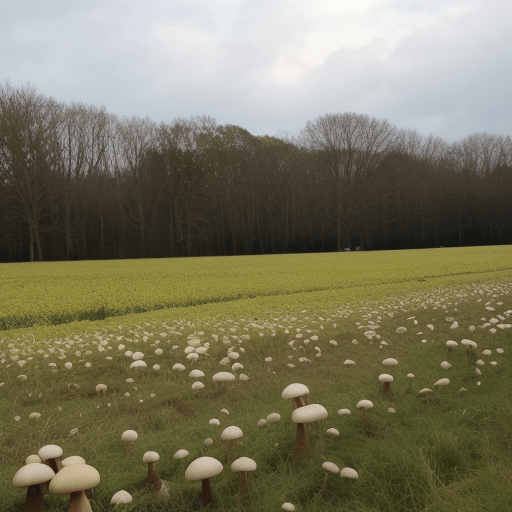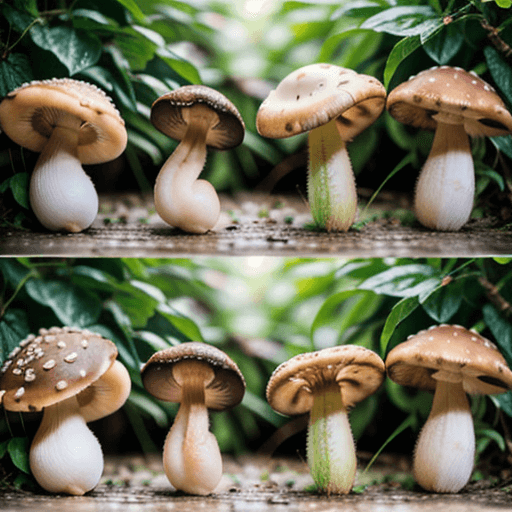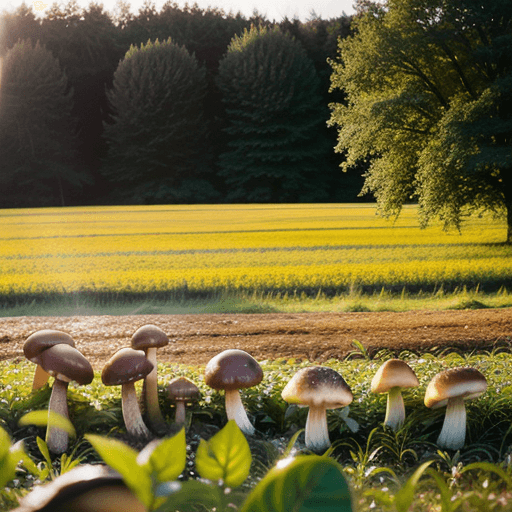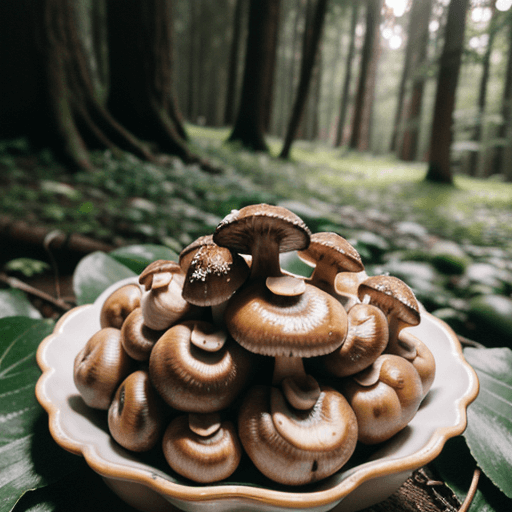Mushrooms are fungi that can be found all over the world.
There are many different types of mushrooms, and they come in all shapes and sizes.
Some mushrooms are edible, while others are poisonous.
Today, we will discuss the mushroom life cycle. We will also talk about how mushrooms grow and spread.

Mushroom Life Cycle is a fascinating and intricate biological process that plays a crucial role in the environment.
A mushroom’s life cycle generally starts with the production of spores, which are microscopic “seeds” released by mushrooms.
Explain it to a child
Mushrooms have different life stages, depending on the type of mushroom. In their mature stage, mushrooms produce spores. These spores grow into mycelia or hyphae, which is the main root system of cells.
Spores are incredibly small (up to 10 million spores can fit on one penny!) and they travel through the air, water, or other mediums until they land in a suitable location for growth in a typical soil or wooded areas.
What is a mushroom life cycle?
Mushrooms are fascinating organisms that can be found in many different ecosystems.
What is a mushroom life cycle?

Simply put, mushrooms have alternate life stages, depending on the species.
In their mature stage, mushrooms produce spores, which germinate and produce mycelia or hyphae main root system of cells.
Spore Stage Cycle
Spore is a truly awe-inspiring phenomenon of nature, depicting the life cycle of mushrooms in stunning detail. Spore has been around for ages, quietly waiting for the right conditions to somehow transform from one life form to another.
Germ Stage Cycle
Germ is a commonly used term that can be applied to any microscopic organism such as bacteria, viruses, or fungi. This makes the word quite expansive and the life cycles of each type of Germ vary greatly.

For example, when it comes to fungi like a mushroom, Germ’s life cycle begins with the production of spores that are released into the atmosphere.
Hyphae Stage Cycle
Hyphae are an essential part of the mushroom life cycle. Hyphae are long, slender filaments that make up the main body of the fungus, and form networks in soil or wood in search of nutrients.
Hyphae will join together to form a mycelium, a mass of intertwined filaments that can release reproductive spores when conditions are right. Hyphae also play an important role in mycorrhizal symbiosis, where certain fungi exchange minerals and sugars with plant roots.
Mature Mycelium Stage Cycle

During this phase, fungi produce stalks and release spores to spread mushrooms further across the landscape. Mature mycelium itself exists for a finite amount of time, developing under ideal environmental conditions after which the specimens need to be harvested for their biological and culinary purposes.
How to define mushrooms?
The simplest way to explain what a mushroom is is that it is a type of edible fungus that typically grows in dark, damp conditions.

- Several species exist worldwide and many types of mushrooms are popularly consumed in cuisine.
- Generally, they range from small, round caps ranging in colors from white to brown, to long-stemmed varieties such as Portobello or Shiitake mushrooms.
- They also vary greatly in flavor depending on the type, offering subtle earthy flavors or more robust umami flavors.
- Mushrooms’ popularity makes them one of the most versatile ingredients used in cooking around the world today.
What are the different types of mushrooms?
There are over 10,000 known species of mushrooms across the globe that have been divided into two large groupings: macroscopic and microscopic.
Macroscopic mushrooms are those that can be seen with the naked eye and include species like white button mushrooms, shiitake mushrooms, and oyster mushrooms, while microscopic mushrooms are too small to be seen without microscopes, like truffles.
Some other interesting variants include chanterelles, porcini, and lobster mushrooms.
How do mushrooms grow?
- Everything starts with a tiny spore that is released from a mature mushroom into the air, and this single spore has the potential to grow into an entire fungus.
- The spores travel through the wind until they land somewhere that has all of the proper nutrients and moisture needed for growth.
- Once in this ideal location, the spore begins to germinate and create mycelium–tiny threads that act as a root system absorbing water and other nutrients required for growth.
Then, when conditions are just right these mycelium form into recognizable mushrooms we can see growing outdoors!
How long is the life cycle of a mushroom?
The entire life cycle of a mushroom is surprisingly short! While the exact length varies depending on the species, a mushroom’s lifecycle typically takes anywhere from a few days to several weeks, from sprouting until reseeding occurs.
In this short time period, mushrooms produce two distinct types of spores that are distributed widely for propagation and germination.
By taking advantage of weather fluctuations and environmental conditions, these spores can remain viable for long periods of time until they find an appropriate environment for growth again.
How many days are in a mushroom’s life cycle?
As fascinating as mushrooms may seem, their life cycles are surprisingly short.
How many days are in a mushroom’s life cycle?
Most species of mushrooms, emerge from the ground and reach maturity in just a few days.
Depending on the type of mushroom and other environmental conditions such as temperature, humidity, and soil composition, the life cycle length can vary broadly; some mushrooms can sprout within 24 hours and perish within the same day while others may last for a few weeks before fading away.
Whatever their lifespans may be, it is evident that mushrooms grow quickly and offer a unique glimpse into the cycle of nature.
When does fertilization occur in the mushroom life cycle?
In the mushroom life cycle, fertilization occurs when spores from one mushroom land on another, forming a mycelium.
When two compatible mating types come together in this way, they can exchange genetic material and create a third type that contains genes from both parents.
Successful fertilization leads to the formation of a new spore-bearing structure called a fruiting body, which will then reproduce by ejecting spores and starting the cycle again.
As demonstrated here, understanding how mushrooms continue through their own unique lifecycle is crucial if one wishes to successfully cultivate them indoors/outdoors; harvesting ripe specimens full with nutritious purposes!
Article Sources
Jacks of Science sources the most authoritative, trustworthy, and highly recognized institutions for our article research. Learn more about our Editorial Teams process and diligence in verifying the accuracy of every article we publish.
